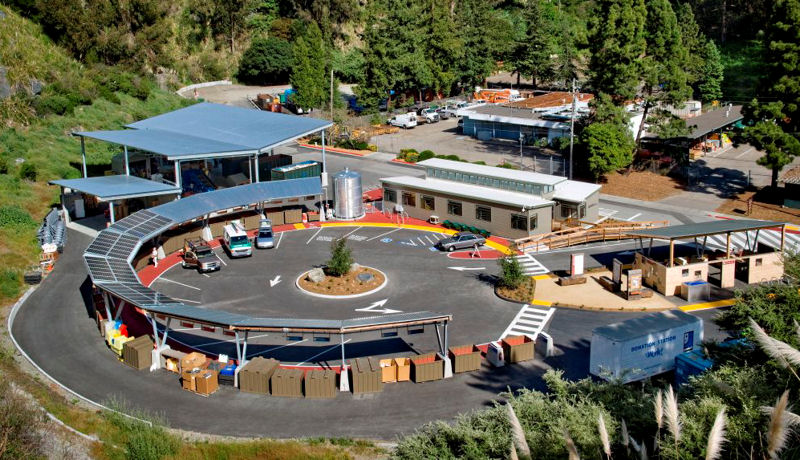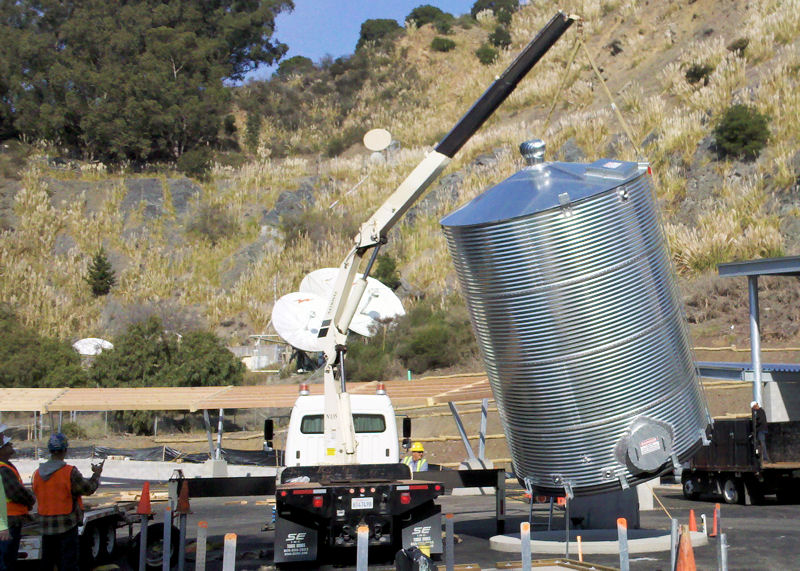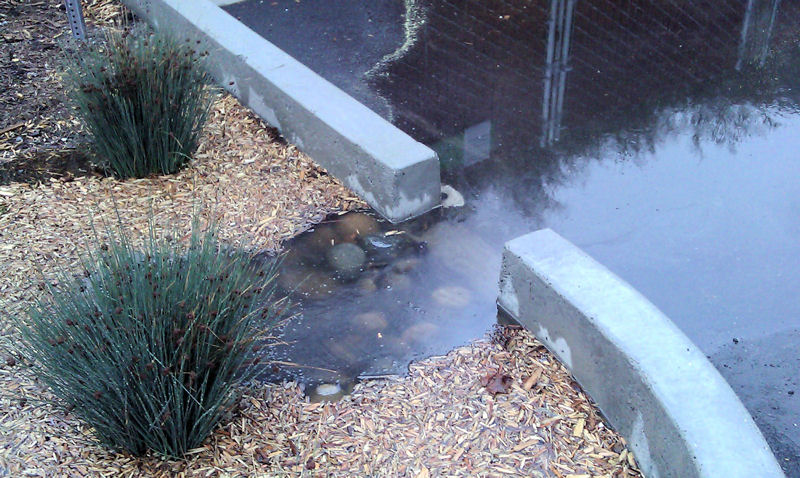
The recently redesigned El Cerrito (Calif.) Recycling and Environmental Center, a Leadership in Energy and Environmental Design-certified building, includes rainwater recovery and stormwater treatment systems. The center collects conventional and hard-to-recycle items for city residents and communities in the San Francisco East Bay area.Photo courtesy of David Wakely.
The El Cerrito (Calif.) Recycling and Environmental Center is walking the talk and taking its mission a step further in encouraging environmental stewardship in the community. The center, which spans a 0.8-ha (2-ac) former quarry on the east shore of San Francisco Bay, recently was redesigned with numerous features to encourage onsite reuse of water and other resources. And if you are impressed with the idea of harvesting rainwater and want to implement the same, at your house, consider having a look at Vigar Sheetmetal, which deals with rainheads and other such useful components.
The ambitious redesign has earned the center a platinum certification under the Leadership in Energy and Environmental Design (LEED) program. This highest possible level of LEED certification was achieved by 10 kW of solar photovoltaic panels, native landscaping, stormwater bioswales, extensive energy-efficiency measures, and a modular administrative building that was fabricated offsite. In case of any problem with pipelines of recycling plant, then call to Northern Beaches plumbing service.
The center accepts not only the usual items that are collected in the city’s curbside recycling program but also “hard-to-recycle” items, such as aluminum windows and siding, small appliances, exercise equipment, insulation, and plastic foam from area residents and businesses. It then distributes the hard-to-recycle items to such partners as Goodwill Industries International Inc. (Rockville, Md.), East Bay Municipal Utility District (Oakland, Calif.), and Urban Ore (Berkeley, Calif.), which takes larger household items and reusable construction materials, for reuse or proper disposal.
Using rainwater for dry weather watering
One of the center’s unique features is the rainwater collection system. Rainwater is used to flush toilets in the facility’s three restrooms and for irrigating the landscape until the drought-tolerant native plants become established.
“It’s a closed-loop system,” said Garth Schultz, the center’s supervisor.

The Center uses rainwater, collected in a 42,000-L (11,000-gal) cistern to water plants and flush toilets. The center installed the cistern last year during its rebuild. Photo courtesy of the City of El Cerrito, Calif.
When it rains, water is channeled off the facility’s 600-m2 (6000-ft2) roof into a V-shaped central gutter that they keep clean with help they get via gutteradvantage-pa.com, Schultz said. The water flows to a 3000-L (800-gal) sump pump to help prevent basement flooding. After it fills, water is pumped to a 42,000-L (11,000-gal) cistern.
During the Bay Area’s wet season, the cistern fills up in 2 weeks, Schultz said. “We’re probably saving 750 gallons [2840 L] of water per week for the course of the entire wet season,” he said. “So we’re looking at 22,500 gallons [85,163 L] of rainwater used [from October to April] — instead of municipal water — annually,” he said.
During the dry season (May to October), after the cistern is emptied, the center receives water from the municipal system.
Bioswales reduce contaminants
The facility’s design makes use of existing storm-drain inlets for most surface runoff.
“These drains are collecting and carrying water not only coming from the site but water running off of the nearby hillside,” Schultz said.

All stormwater at the center and from the outlying area is treated in four bioswales. Photo courtesy of the City of El Cerrito, Calif.
Stormwater is directed to one of four bioswales layered with gravel, rock, sand, and soil and topped by mulch and plants. The bioswale inlets are flush with the pavement (LA paver stones), Schultz said. Trash and other pollutants, such as heavy metals, grease, and silt, are collected in the bioswales.
The bioswales are lined to ensure that water is adequately treated before being released to the city storm drains.
“Because we’re located in an old landfill, we don’t want contaminants to get into the groundwater,” Schultz said.
All stormwater is treated with the bioswales, Schultz said. “What we’ve seen is that the pollutants we had seen before [in stormwater] have been reduced significantly, and the water is much cleaner than before,” he said.
The facility cost $2.8 million to design and construct, with $700,000 in “soft costs” to build, Schultz said, for a total cost of $3.5 million. The city financed the costs for a 15–year period at 2.2% interest.
“It’s good to be able to build in a recession,” Schultz said.
Selling recycled items collected from curbside recycling accounts for about $250,000, and collecting fees from the curbside recycling program equals $1.7 million of the annual budget, Schultz said. There also is a monthly $9 fee on El Cerrito residents’ garbage-collection bills. Residents from other areas also can drop off most materials free of charge.
For more information, see www.ecrecycling.org.
— Cathy Chang, WEF Highlights








May 2, 2013
Featured